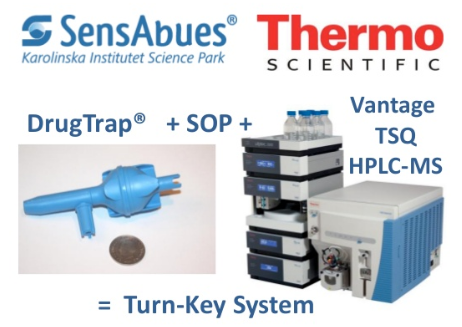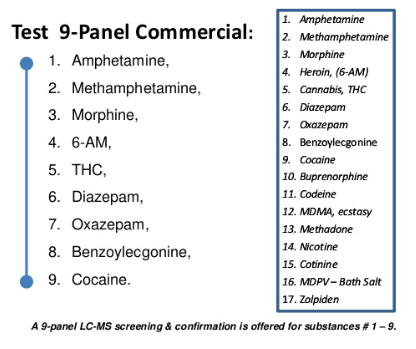There is little doubt that there is a research push for roadside testing for screening purposes for drugs of abuse and illicit drugs. All one needs to do is to come to any national or regional forensic science meeting or pull the various agendas to see what is being discussed. It’s oral fluid roadside testing and now the holy grail-roadside breath testing for drugs.
Obviously, this technology needs to be vetted by the defense community via rigorous Frye and Daubert hearings.
Here is an article that was in Science Daily on this perennial quest for that Holy Grail (full source at Olof Beck, Niclas Stephanson, Sören Sandqvist, Johan Franck. Detection of drugs of abuse in exhaled breath using a device for rapid collection: comparison with plasma, urine and self-reporting in 47 drug users.Journal of Breath Research, 2013; 7 (2): 026006 DOI:10.1088/1752-7155/7/2/026006):
Breath Study Brings Roadside Drug Testing Closer
Apr. 25, 2013 — A group of researchers from Sweden have provided further evidence that illegal drugs can be detected in the breath, opening up the possibility of a roadside breathalyzer test to detect substances such as cocaine, amphetamines and cannabis.
Using a simple, commercially available breath sampler, the researchers have successfully identified a range of 12 substances in the breath of 40 patients recruited from a drug emergency clinic in Stockholm.
Their findings have been published today, 26 April, in IOP Publishing’sJournal of Breath Research.
Blood, urine and saliva are the most popular methods for detecting illegal drugs and are already used by law enforcement in a number of countries; however, exhaled breath is seen as a promising alternative as it’s easier to collect, non-invasive, less prone to adulteration and advantageous when location becomes an obstacle, such as at the roadside.
Exhaled breath contains very small particles that carry non-volatile substances from the airway lining fluid. Any compound that has been inhaled, or is present in the blood, may contaminate this fluid and pass into the breath when the airways open. The compounds will then be exhaled and can subsequently be detected.
In this study, researchers from the Karolinska Institute in Stockholm collected breath, blood plasma and urine samples from 47 patients (38 males, 9 females) who had taken drugs in the previous 24 hours and were recovering at a drug addiction emergency clinic.
Interviews were also undertaken with each patient to assess their history of drug use.
The breath samples were taken using a commercially available sampling device — SensAbues — and then analysed using liquid chromatography and mass spectrometry.
The portable sampling device consists of a mouth piece and a micro-particle filter. When a patient breathes into the mouth piece, saliva and larger particles are separated from the micro-particles that need to be measured.
The micro-particles are able to pass through and deposit onto a filter, which can then be sealed and stored ready for analysis. Breath samples were analysed for twelve substances.
Alprazolam and benzoylecgonine were detected in exhaled breath for the first time, whereas for methadone, amphetamine, methamphetamine, cocaine, morphine, 6-acetylmorphine, tetrahydrocannabinol, buprenorphine, diazepam and oxazepam, the results confirmed previous observations.
“Considering the samples were taken 24 hours after the intake of drugs, we were surprised to find that there was still high detectability for most drugs,” said lead author of the study Professor Olof Beck.
“In cases of suspected driving under the influence of drugs, blood samples could be taken in parallel with breath when back at a police station. Future studies should therefore test the correlation between blood concentration of drugs of abuse and the concentrations in exhaled breath.”




